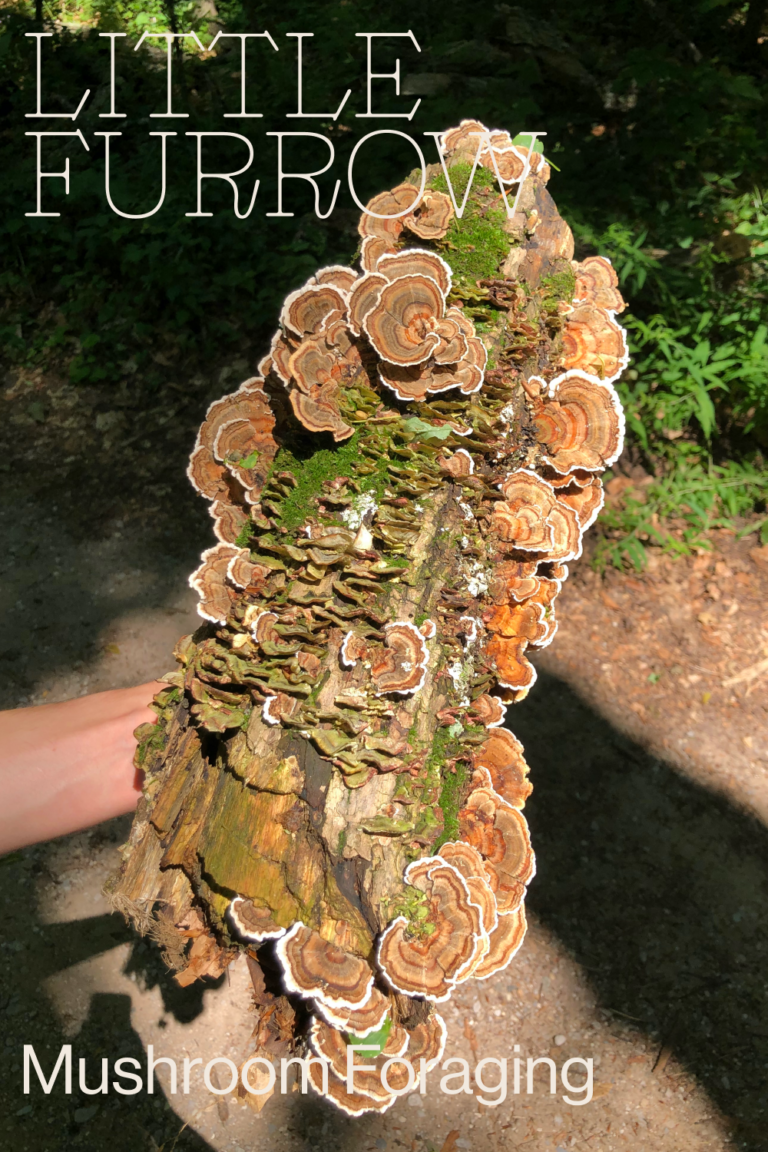Mushroom Foraging: Chanterelle and Black Trumpet Mushrooms
On a recent trip to the coast of Maine, I got lucky enough to find some of my bucket list mushrooms. I have been dreaming of finding Chanterelles for a while and finally spotted some gorgeous ones while foraging for huckleberries. I was on this little rocky peninsula, surrounded by pines and water, and then I saw them! These little orange mushrooms were popping out of the ground all around. I couldn’t have been more excited. I also got lucky enough to find some Black Trumpet mushrooms and what I think may have been a Coral mushroom. I didn’t end up eating the Coral mushroom, as I wasnt fully confident and there are some pretty close look-alikes that are inedible. It’s best to be cautious! The chanterelles and black trumpets were delicious, and I cannot wait to find more in the future. You may be curious on how to identify them yourself if you come across them in the wild, so let’s dive into how to find, identify and use these amazing mushrooms.

Chanterelles
Chanterelles are a delicious and highly sought after mushroom and are a part of the species Cantharellus and Craterellus. They are also absolutely gorgeous. Most types of chanterelles are different hues of orange and stand out against the forest floor making them easy to spot. There are many different types of chanterelles, including Red, Yellow, and Yellowfoot Chanterelles. The Chanterelles that I found while foraging I have deduced to be Yellowfoot.
Habitat
Chanterelles grow from the ground and thrive in damp conditions. They generally spring up soon after a heavy rain. I found mine right by a lake after a few days of rain. Chanterelles tend to grow in hardwood forests and you can generally find them near Oak trees.

How to Identify
With mushroom book in hand for reference, look for a mushroom with a little dip to full on conical shape in the middle of the mushroom top. On the underside of the “cap” there will be forked gill-like folds that disappear into the mushroom’s stem. It’s important to note that they are not gills. Most Chanterelles have a solid stem, except for Yellowfoot, which have a hollow stem. Something to note for Yellow Chanterelles (not Yellowfoot), is that many report that they have a sweet apricot odor.
Chanterelles do have a couple look-alikes including Jack-o’lantern mushrooms and False Chanterelle. The biggest difference between true chanterelles and Jack-o’lanterns is that Jack-o’lanterns have true gills. The gills will be straight and will not fork out into folds like true chanterelles will.
False Chanterelles also have true gills that are brighter than the cap and fork out. Do adequate research on what the gills on all look-alikes look like so you feel confident that you have a true chanterelle in your hands. In terms of toxicity, Jack-o’lanterns are poisonous and False chanterelles are not recommended and can cause stomach issues.

Benefits and How to Use Them
Chanterelles are a great source of many vitamins and minerals including copper and can have anti-inflammatory properties. They are delicious alone, cooked up in some butter and garlic, or used in place of any mushroom in recipes.
Black Trumpets
Black trumpet mushrooms also known as craterellus fallax are an awesome mushroom to forage for beginners as there are really no poisonous look-alikes. They are also highly sought after and delicious like their cousins, Chanterelles.

Habitat
Trumpets grow from the ground. They can appear in clumps, or all alone. They like to grow in mossy woodlands with hardwoods and coniferous trees. If you find a Black Trumpet, keep your eye out for chanterelles! Black trumpets and chanterelles often grow near each other.
How to Identify
Black trumpets are easy to identify, but can be hard to spot due to their color. Black trumpets color can range from black, to gray, to brown. Their color blends in easily with the forest floor, so you have to have a sharp eye to spot them. As the name suggests they are hollow and funnel shaped like a trumpet and are gill-less. They are also very delicate and their edges tend to be slightly ruffled.
The black trumpet mushroom can be confused with Devil’s Urn mushrooms. While they are not poisonous, they are not tasty. I find them to look pretty different and black trumpets have some obvious distinctions from Devil’s Urn. They also look much like the edible Fragrant Black Trumpets, which look very similar to chanterelles. The big difference between black trumpet and Fragrant Black trumpet is that the bottom of Fragrant Black trumpets stems are solid rather than hollow.
Benefits and How to Use Them
While black trumpets are generally sought after for their delicious flavor, they also have some bonus health benefits. They are high in vitamin B12, Vitamin D, Selenium, Potassium, and more!
Black trumpets are delicious cooked in a fat of your choice, garlic, salt, and added to a beautiful bowl of pasta, or really anywhere you like to eat mushrooms. They can also be dried and used like a truffle to flavor dishes or infuse oils.

We hope you get to spot both these amazing mushrooms and have a chance to try them. Make sure you feel confident with your identification by researching and comparing what you find to your trusted mushroom identification books and multiple reliable references. You’ll never regret being completely sure you have the right thing. This goes for all foraging, wether you’re looking for nuts, herbs, edible flowers, and fruits. There are so many wonderful plants out there that are extremely beneficial for us, but you wanna know you’ve found what you’re looking for. Check out our post, How to Forage Mushrooms: The Do’s and Don’ts for more information on mushroom foraging and our post The Basics of Foraged Food for more info on general foraging. Happy Foraging!
Eat foraged mushrooms at your own risk.
Some information gathered from A Simple Guide to Common Mushrooms; Mushrooms of The Upper Midwest, by Teresa Marrone and Kathy Yerich







